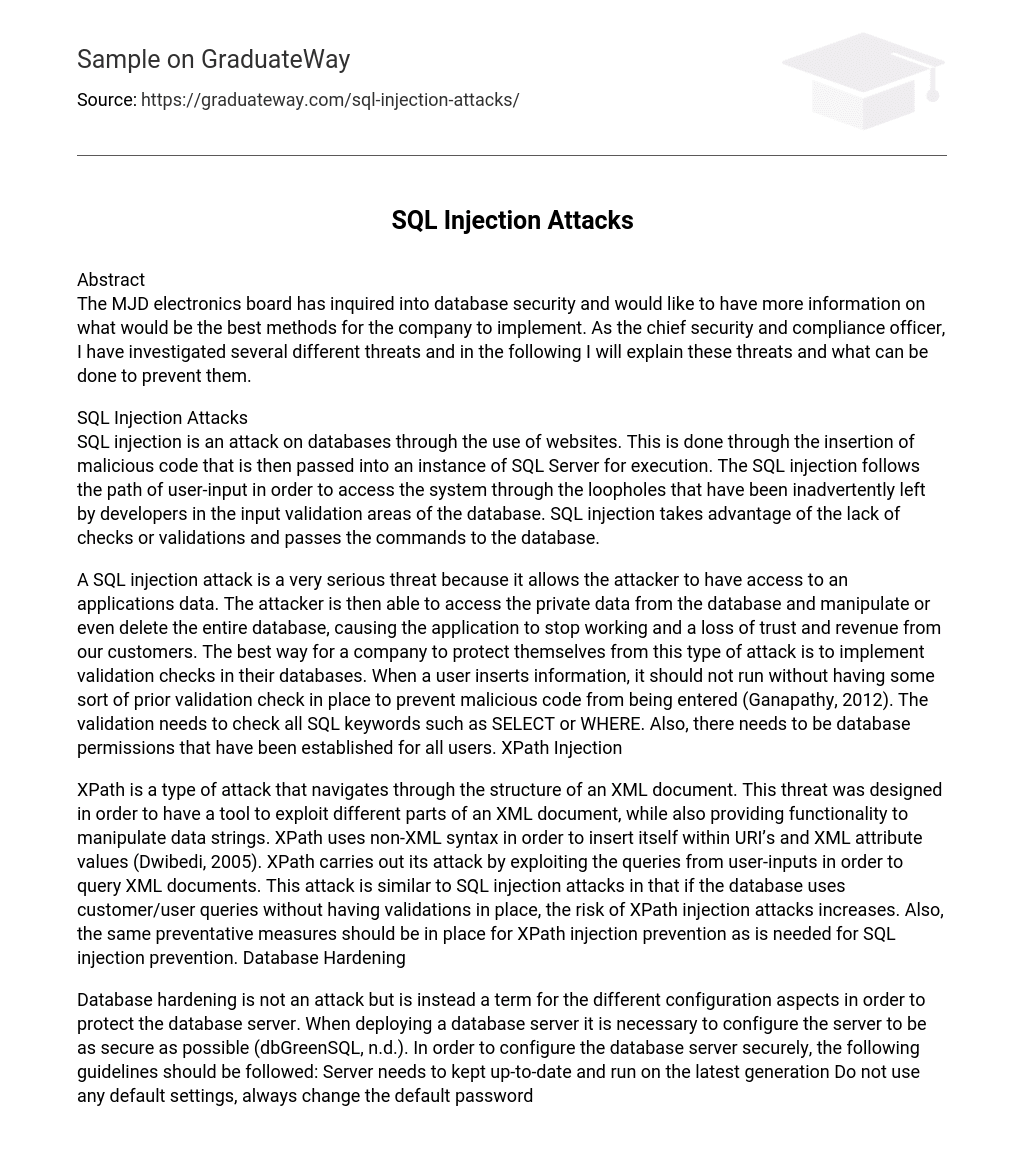Abstract
The MJD electronics board is inquiring about the most effective approaches to implement database security. As the chief security and compliance officer, I have examined different risks and will now address these risks along with their preventive measures.
SQL Injection Attacks
SQL injection is a form of assault that specifically targets databases by exploiting vulnerabilities found in websites. This is accomplished when attackers insert malevolent code into user input fields, causing the SQL Server to execute it. The method relies on the unintentional loopholes created by developers during the process of validating input, where there may be insufficient checks or validations performed. By doing so, SQL injection manages to circumvent security measures and effectively transmit commands to the database.
SQL injection attacks pose a serious threat as they grant unauthorized access to application data. This can lead to the manipulation or deletion of the entire database, resulting in application failure and a loss of trust and revenue from customers. To safeguard against such attacks, it is crucial for companies to implement validation checks in their databases. Before allowing the insertion of user information, thorough validation should be conducted to prevent the entry of malicious code (Ganapathy, 2012). This validation should encompass all SQL keywords, including SELECT and WHERE. Additionally, proper database permissions must be established for all users. XPath Injection
XPath is a form of attack that exploits the structure of an XML document. Its purpose is to manipulate data strings and target various sections of the XML document. By using non-XML syntax, XPath inserts itself into URI’s and XML attribute values (Dwibedi, 2005). This attack occurs when user-input queries are exploited to query XML documents. The risk of XPath injection attacks increases if databases use customer/user queries without implementing proper validations, similar to SQL injection attacks. Therefore, the same preventive measures used for SQL injection prevention should also be implemented for XPath injection prevention. This includes database hardening measures.
Database hardening is the process of configuring a database server to protect it from attacks and ensure its security (dbGreenSQL, n.d.). To ensure a secure configuration, the following guidelines should be followed: keeping the server up-to-date and running on the latest generation, avoiding the use of default settings by changing the default password and username, and maintaining a separate server for sensitive information and databases.
Minimize access levels by assigning them based on job functions. Review the logging system to detect intrusions before they escalate into issues.
References
Ganapathy, L. (2012). How to Prevent SQL Injection Attack. Retrieved from,
http://www.thegeekstuff.com/2012/02/sql-injection-attacks/. Dwibedi, R. (2005). XPath Injection in XML Databases. Retrieved from,
http://palizine.plynt.com/issues/2005Jul/xpath-injection/.
dbGreenSQL (n.d.). MySQL Security Best Practices (Hardening MySQL Tips). Retrieved from,
http://www.greensql.com/articles/mysql-security-best-practices.





